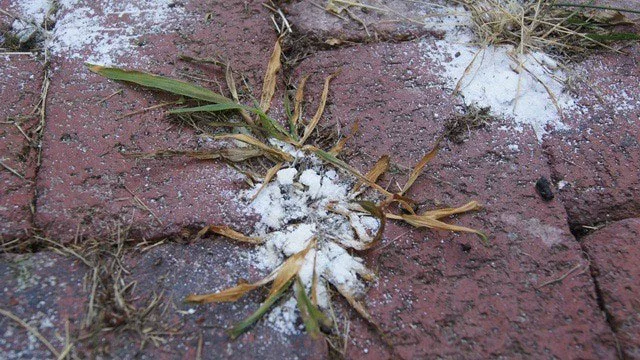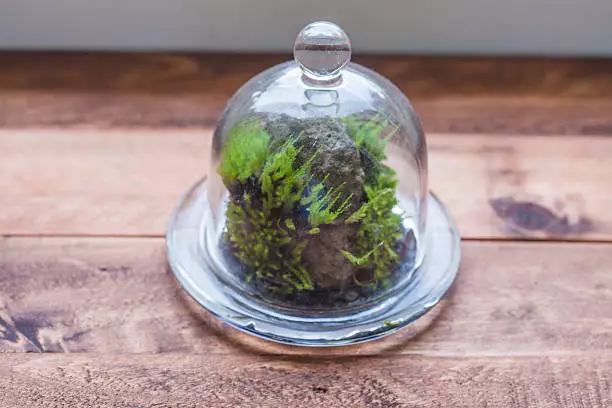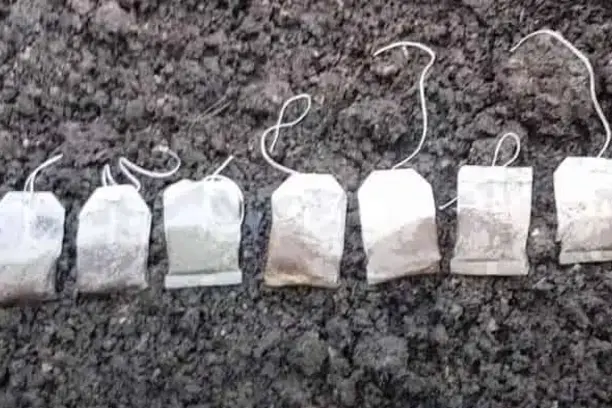Healthy monstera plants have broad, green, heart-shaped leaves, making them glossy for indoor décor. However, your monster leaves may start curling with a drooping look. This change in behavior signals the plant isn’t healthy, and it should be fixed before the plant succumbs.
But, what are the reasons for the curling of monstera leaves?
Causes of monstera leave the curling
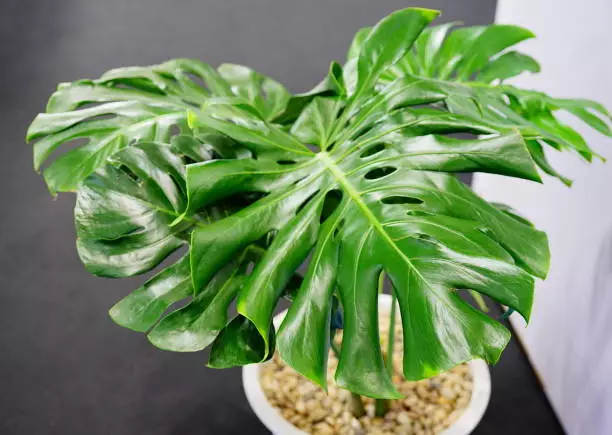
There are many reasons why monstera leaves curl. Some of the reasons are underwatering, overwatering, overfertilization, and so on. The main reasons for the curling of leaves in monstera plants are underwatering and low humidity. Below are the causes of monstera leaves curling behavior.
Underwatering
Plants require different levels of water supply for survival and healthy growth. Water monstera plant when the soil on the pot’s surface is dry.
When there’s a low water supply, the monstera plant adopts a self-defense mechanism towards the water deficiency. To minimize water loss, the monstera plant reduces its surface area for the transpiration process.
This reaction to insufficient water causes the leaves to curl.
A monstera plant with water deficiency shows other signs such as brown or yellowish leaves, droopy look, crispy leaf tips, and dry soil.
Overwatering
Similar to underwatering, overwatering a monstera plant also causes the curling of its leaves. An overwatered monstera plant has yellow leaves, dark brown spots on the leaves, and soggy soil. When there’s no control of excess water, with a poor drainage system, it causes root rot.
Excess water supply blocks the pores of the roots; therefore, they don’t absorb mineral salts and water, which are essential requirements for plant growth.
This lack of enough water and mineral salt supply causes the curling of the leaves of a monster plant.
Infestation by pests and diseases
Pests such as aphids, spiders, and thrips are a threat to the survival of plants. They depend on these plants for their food by sucking the plant sap (water and mineral salts, sugars). When they suck the juice before it reaches the leaves, the leaves curl because of a lack of water and mineral salts.
Diseases can also attack monstera plants and result in the curling of their leaves. There are fungal and bacterial diseases in plants. One primary disease, root rot, is caused by overwatering and poor drainage. Root rot has curling of leaves as one of its effects on a plant.
Applying excess fertilizers
Fertilizers are stimulants to the fast and healthy growth of plants. Over-applying fertilizers harm plants and may cause burning or scorching of leaves.
Applying excess fertilizers also causes the curling of leaves in monstera plants. Watch out for whitish rusty build-ups on the container’s edges to ascertain the curling of monstera leaves because of excess fertilizers.
Temperature Stress
Monstera plants grow best in room temperatures between 65-86 degrees Fahrenheit. They also thrive when placed in a spot with warm, indirect sunlight. Temperature levels affect the rate of transpiration (water loss process).
Low temperature reduces the growth rate of monstera plants. This slow growth rate is expected during winter because the plants reduce their rate of physiological processes.
When exposed to high temperatures, monstera leaves lose lots of water. To reduce the transpiration rate, they develop self-defense mechanisms by reducing their surface area, hence the curling of leaves.
Low Humidity
Humidity levels affect the rate of transpiration in monstera plants, which affects the behavior of their leaves. In low humidity, the rate of transpiration increases. This process implies that the plant will lose lots of water to the atmosphere.
In response to high water loss, the monstera plant develops a self-defense mechanism against it by curling its leaves.
A monstera plant in a place with low humidity has brown edges on the leaves.
A monstera plant survives well in places with high humidity because it’s a tropical plant.
Young leaves
Curled leaves in a young monstera plant are normal because the plant is in the budding stage. As growth continues, they unfurl gradually into beautiful heart-shaped leaves. So this is not something to worry about at the plant’s early growth stage.
How to fix curling of leaves in monstera plants
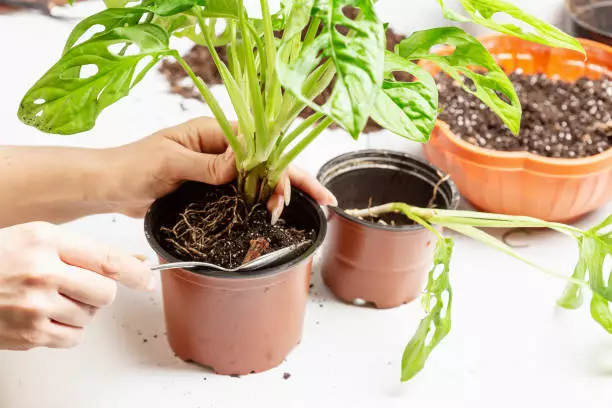
Before fixing the curled leaves in your monstera plant, first, determine its cause.
In this way, you will apply the correct fixing method to have your monstera plant glossy again. below are the ways you can use to fix the curled leaves in your monstera plant:
1. Water monstera plant after 7-10 days
To determine an underwatered monstera plant, look for signs such as brown leaves, droopy look, dry soil, and crispy leaf tips.
Also, carry the pot to feel its weight. Lighter weight than its usual weight means the monstera plant lacks enough water.
To fix this condition, soak the monstera plant roots in water until the entire soil is moist. Check the drainage system and the potholes to ensure the water has stopped running. When you apply water to your monstera plants every 7-10 days (depending on the season), they will not curl.
2. Drain overwatered soils
To ascertain if a plant is overwatered, check the condition of the soil. Dip a finger or stick about 2 to 3 centimeters into the soil. If your finger or the stick comes out looking dumpy and with some soil around it, it has excess water. For accuracy, check the wetness of the soil by using a moisture meter.
You can fix this condition by waiting for some more days before watering your monstera plant. Waiting allows the plant to absorb the excess water completely.
If there is a poor drainage system resulting from either the type of soil used or the holes in the pot, ensure you correct it before it extends to causing root rot in your plant.
3. Treat pests and diseases on the plant
To identify a monstera plant infested by pests, check parts such as the stem and its lower position to see any pests such as aphids walking on them. Changes in the leaf color, e.g., green leaves turning yellow, may also signify infestation by pests.
To fix this condition, separate the plant from the rest to prevent the pests from moving to the other plants. If the condition worsens, apply the recommended amounts of pesticides to the affected plants by following the instructions indicated in the manual.
Fungal diseases such as root rot are treated by cutting the damaged leaves using a sharp pair of secateurs or repotting.
To repot the plant affected by root rot, follow the procedure below:
- Remove the plant from the soil in the pot.
- Rinse the roots with clean water to remove the old soil and any pests present.
- Cut the affected roots and leaves and dispose of them. Be sure to use a pair of gloves to protect your hands from the disease.
- Disinfect the remaining leaves and roots using rubbing alcohol or hydrogen peroxide.
- Repot the monstera plant in a new pot with fresh uninfected soil. If you want to use your old pot, be sure to thoroughly clean and disinfect it before reusing it.
4. Drain the excess fertilizer salts in the pot
An overfertilized plant has burned or scorched curled leaves. To fix this, if the damage isn’t severe on most of the leaves, pluck or cut them. Otherwise, repot the plant by using the procedure outlined above.
Repotting helps the excess fertilizers to remain in the older pot and soil. To ensure you don’t overfertilize in the future, use half of the recommended amount of fertilizers.
5. Place the plant in indirect sunlight
Other than curled leaves, a plant with temperature stress has yellow leaves, dry leaf edges, and less rigid leaves.
To correct temperature stress in the monstera plant, check the position of the plant and see if it’s direct to the sun. If it is, remove and reposition it at a spot with indirect warm sunlight.
Keep the monstera plants away from room conditioners or fireplaces.
6. Use a humidifier
A plant in distress because of low humidity has a drooping look and curled crispy brown leaves. These characteristics are also common to underwatered plants because both are affected by high transpiration rates.
To fix low humidity, first, ensure it is low humidity that’s causing the curling of leaves. For accuracy, use a hygrometer to measure the humidity of the place the monstera plant is.
Place your plants in one place to increase humidity levels. With higher humidity, transpiration rate decreases hence no curling of monstera leaves.
Also, to improve the humidity of the place, use a humidifier.
Fixing the condition of curled leaves in monstera plants is easy, and you shouldn’t panic when you notice such situations in your plants.
By determining the primary cause and applying the correct fixing method, you will have your gorgeous plant blooming and looking glossy in your house again.
References:
[1] Bodie V. Pennisi, Professor, University of Georgia Extension: Growing Indoor Plants With Success.
[2] Agriculture and Natural Resources, University of California: Curling Leaves on Plants

